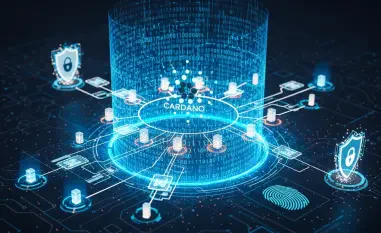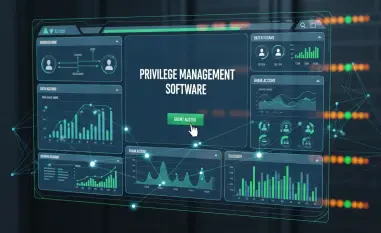In the current cybersecurity landscape, C++ malware has reemerged as a significant threat, revolutionizing the strategies of cybercriminals targeting crucial sectors. Recent incidents indicate these malware exploits have been sophisticatedly crafted, posing colossal challenges for cybersecurity professionals. The recent attack using complex C++ malware, such as BeardShell and SlimAgent, exemplifies this growing menace. This discussion delves into the characteristics, advancements, and implications of C++ malware within modern cybersecurity contexts.
Dissecting C++ Malware
C++ malware exploits encompass intricate program elements and core principles that enable them to infiltrate and compromise systems effectively. These exploits often embody advanced techniques, such as sophisticated algorithms, that help circumvent security measures. By leveraging the versatile capabilities of C++, cybercriminals craft malware that is agile and difficult to detect. The prominence of C++ in malware design underscores its importance in generating complex cybersecurity threats that challenge conventional defensive mechanisms.
As a formidable tool in the cyber attacker’s arsenal, C++ malware not only includes advanced programming techniques but also employs mechanisms that adapt to different environments. These characteristics allow the exploits to evade detection by antivirus software continually. This adaptability and complexity mark C++ malware as a critical threat, necessitating a continuous evolution of cybersecurity strategies.
Core Elements and Methodologies in C++ Malware
Tactics for Sustained Access
Malware developed in C++ frequently uses backdoor and persistence methods to ensure prolonged access to compromised systems. Techniques such as COM hijacking manipulate Windows’ internal mechanisms, granting malware continuous presence even after system reboots. By embedding itself in the registry, such malware can evade typical scrutiny, making its detection and removal increasingly challenging for cybersecurity experts.
Payload Execution Techniques
C++ malware’s ability to deliver and execute malicious payloads is a distinctive feature that enhances its threat level. This malware often integrates technologies like PowerShell to execute scripts and other harmful components efficiently. Encryption methods, such as AES and RSA, further secure the payloads, making them harder to detect and analyze. Consequently, these intricate mechanisms necessitate advanced countermeasures by cybersecurity teams worldwide.
Current Advances in C++ Malware
The sophistication of C++ malware remains abreast of current technological evolutions, showcasing cutting-edge innovations and methodologies. Recent developments have expanded the malware’s capabilities, such as enhanced encryption and more effective exploitation of vulnerabilities. These advancements mirror the fast-paced evolution of technology and the relentless efforts by cybercriminals to reinvent malicious exploits.
Despite progressive cybersecurity protocols and controls, the continuous evolution in C++ malware reflects its capacity to adapt. This adaptability suggests a concerning trend, wherein malware strategies are adjusted in response to evolving defense mechanisms, thus perpetuating a relentless cycle of threat and counteraction.
Practical Implications in Various Sectors
C++ malware is particularly consequential in sectors like government agencies and critical infrastructure, where breaches can have far-reaching impacts. Notable instances, including attacks on entities supporting geopolitically sensitive regions, unveil the strategic objectives of cyber attackers. Exploiting vulnerabilities to gather intelligence or disrupt operations, this malware threatens sectors that are critical to national security and economic stability.
The utilization of C++ malware within these contexts often centers around detailed reconnaissance and long-term intelligence collection. Prominent cases illuminate attackers’ strategies to exploit technological dependencies in government and infrastructure, thus inciting further research and development in cybersecurity defenses.
Obstacles and Constraints
Despite technological advancements, combating C++ malware presents several formidable challenges. Detecting and mitigating such sophisticated threats require a robust understanding of its architecture and execution methods. However, evolving regulatory landscapes and economic pressures impede rapid countermeasure implementations, often allowing cybercriminals to exploit systemic vulnerabilities.
The continued development of C++ malware is also affected by increased legal scrutiny and market dynamics that heighten the complexity and risk for cybersecurity professionals. Addressing these challenges necessitates collaborative efforts among governments, organizations, and technology innovators to devise comprehensive defense strategies.
Anticipating Future Directions in C++ Malware
Looking ahead, C++ malware is poised to evolve further, integrating more sophisticated tactics that could define the trajectory of future cyber threats. As technology pushes boundaries, it is anticipated that malware will incorporate artificial intelligence and machine learning to optimize its adaptability. Such advancements may significantly elevate the threat landscape, urging cybersecurity frameworks to stay a step ahead.
Continued research and innovation are crucial to anticipate and mitigate future C++ malware capabilities. Investing in cutting-edge solutions and fostering collaborative cybersecurity ecosystems will strengthen defenses and mitigate prospective risks.
Summary and Insights
The review of C++ malware exploits reveals its multipronged impact on modern cybersecurity. This malware, characterized by its advanced techniques and persistent nature, challenges existing defenses and prompts ongoing innovation in countermeasures. As the landscape evolves, understanding and adapting to these threats remain imperative for safeguarding crucial infrastructures and organizations from potential cyber incursions.













